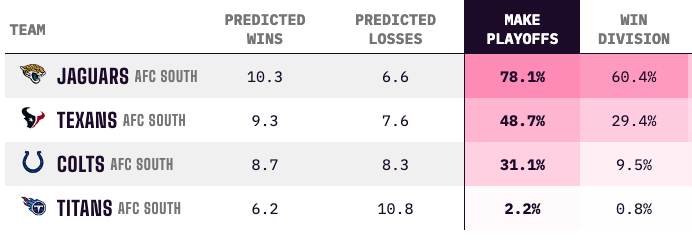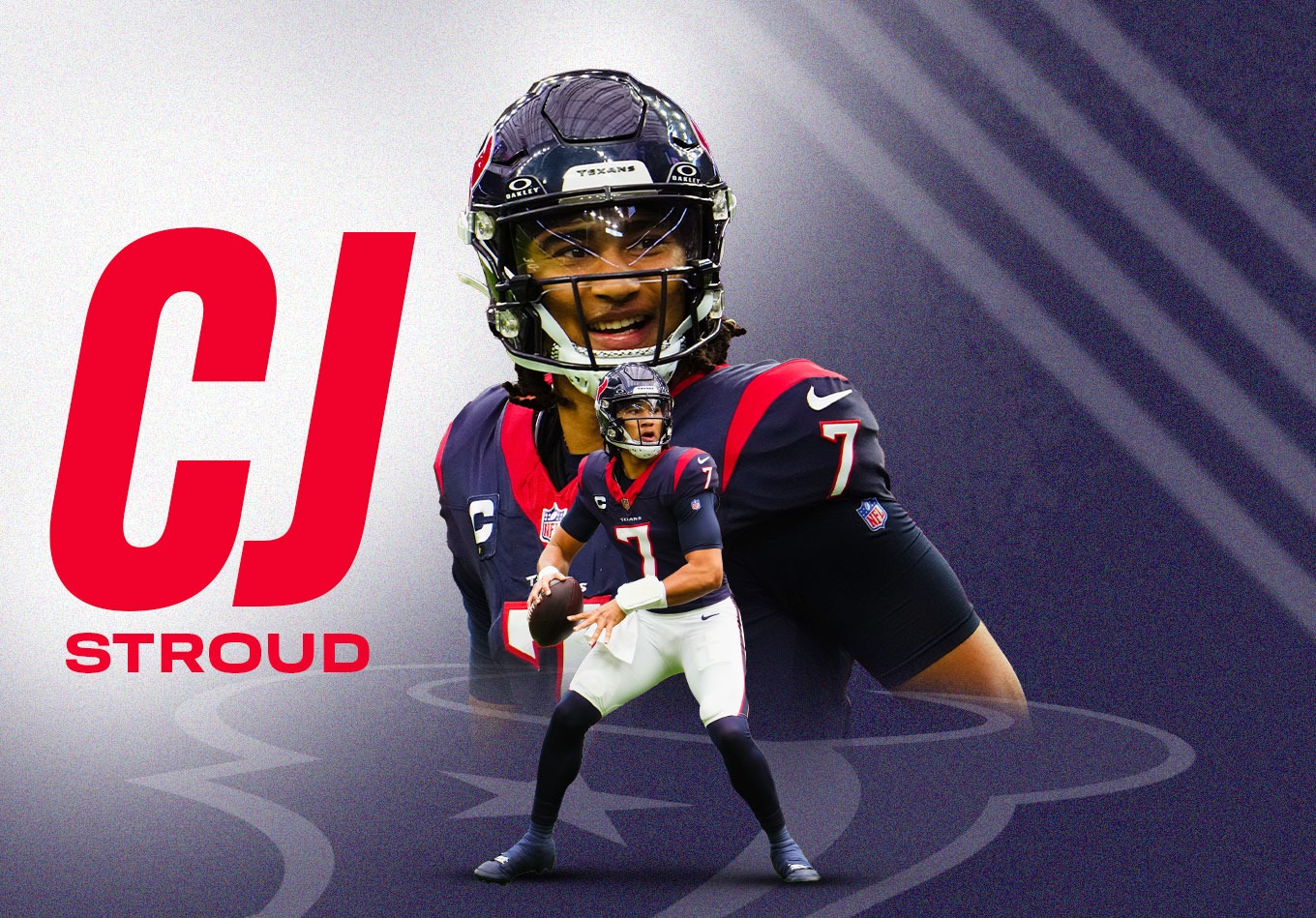C.J. Stroud is a revelation.
The quarterback of the Houston Texans is putting together one of the best rookie regular seasons by a passer since the AFL-NFL merger and certainly the best complete campaign the league has gotten from a first-year QB in a handful of years.
He’s averaging 8.1 yards per throw, a number that only one other rookie QB – Ben Roethlisberger – has ever put up over anything close to a full season. He’s got a passer rating of 101, a figure a rookie QB hasn’t touched since Robert Griffin III’s fairytale 2012 in Washington.
And he has been preternatural at avoiding the interception: Stroud has thrown just two of them. That 0.6% interception rate would be the best ever for a qualifying rookie QB. He’s already led a pair of game-winning drives in the fourth quarter, including one against an AFC playoff team – Joe Burrow and the Cincinnati Bengals – on Sunday.
The Texans won three games last year and were bad enough to get Stroud with the No. 2 overall pick in the NFL Draft after the Carolina Panthers traded up to get Bryce Young. Now, they’re 5-4 in the standings and look like a real possibility to make the postseason.
AFC South Projections

Stroud hasn’t done it alone, but his ascendancy has keyed the Texans’ turnaround. It’s rare for it to be this obvious this quickly that a team has its guy for the next decade, but Houston obviously has that in Stroud.
He and first-year coach DeMeco Ryans are poised for a long and fun run together, and offensive coordinator Bobby Slowik would probably join them if the team’s performance to date weren’t setting him up for his own head coaching opportunities.
But none of it works if Stroud doesn’t play well, and he has so far made the NFL look startlingly easy. Data shines a light on how he is doing it.
Letting it Rip
The Texans have not been cautious about letting Stroud do what he does. Part of Stroud’s profile at Ohio State was that he could throw a gorgeous intermediate and deep ball. The Texans knew who they were getting and haven’t wasted time letting him fire away.
Stroud has averaged 9.4 air yards per pass attempt. While winning matchups with the Bengals and Tampa Bay Buccaneers the past two weeks, Stroud has averaged more than 11 air yards per attempt while totaling an NFL-high 826 passing yards with six passing touchdowns and one interception.
The only two quarterbacks (minimum 100 attempts) who throw a deeper average attempt over the whole season are Tennessee’s tandem of Will Levis and Ryan Tannehill, as the Titans opt for for the league’s most chuck-and-duck style of passing game.
Stroud uncorks a lot of throws with a high degree of difficulty, and he is no particular fan of the check down – an option he’s only taken on 8.1% of his drop backs, a tick below the 8.8% league average.
An Ideal Environment
It helps Stroud’s deep-passing efforts that the Texans have some of the league’s most capable deep targets. Houston’s Noah Brown (another Ohio State Buckeye), Tank Dell and Nico Collins are all in the top 20 among NFL receivers in yards at the catch. Brown is also in the top 10 in yards after the catch.
Stroud has a big arm, to be sure, and Houston has receivers who help him get his money’s worth. Collins and Dell are both on pace for 1,000-yard receiving seasons, and Brown isn’t far off the pace. Dell is a rookie, Collins a third-year man, and Brown a veteran whom the Texans correctly identified as a bargain-basement free-agent signing at $2.6 million on a one-year contract.
Those three receivers all run well, but Stroud still needs time for their routes to develop downfield. He has, fortunately, gotten that time. Stroud’s average time to throw is 2.85 seconds, third longest in the league behind Deshaun Watson and Justin Fields. Some of that time is due to solid pass protection, and some of it is due to Stroud’s improvisational abilities.
Nobody should ever confuse him for a running quarterback (he has 86 rushing yards and two rushing touchdowns on the season), but his throw-on-the-run talents are sincere – as is his ability to process a defense on the move.
Stroud’s receivers have been adept at getting open when their QB needs them. Stroud’s 82.2 open target percentage is seventh in the NFL. He can hit tight windows, but often, it isn’t necessary.
Room for Improvement
That Stroud will probably become a better quarterback is self-evident. That is usually how it works for rookie passers whether they take a while to adjust to the NFL game or, like Stroud, take that game by storm.
Stroud has been more erratic than his shiny top-line numbers indicate. He ranks 28th in the league in completion percentage (61.6) and has the fourth-worst well-thrown percentage (75.8) – both likely byproducts of his high air yards per attempt). His 2.69 pickable pass percentage is better than average but not as historic as his actual interception rate of a fraction of a percentage point.
Stroud could do a better job being on target and keeping the ball away from defenders. That is a scary concept, given what he is already achieving as a straight-out-of-the-box NFL passer.
That growth is already happening. In the last two weeks, Stroud’s well-thrown percentage has risen to 83.3% – well above the league average. And we only deemed one of his 77 passes in those two games as a pickable pass.
As a result, the rest of the AFC South has a big problem that will only get worse.
Check out our MLB offseason news and NBA in-season coverage, and our NFL and college football predictions. Follow us on X and Instagram for more!
